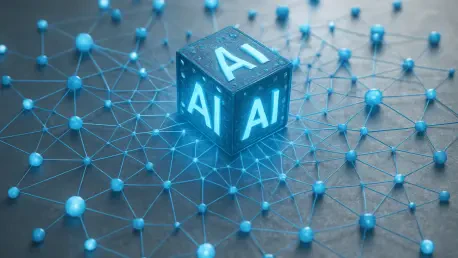In an era where digital landscapes are increasingly vulnerable to threats, AI-driven cybersecurity solutions have emerged as a beacon of technological advancement. These sophisticated systems promise to revolutionize how businesses, especially small to midsize establishments, safeguard their sensitive data against cyber incursions. As cyber threats become more intricate and pervasive, the deployment of AI to detect and counter these dangers is a natural and necessary evolution. This article delves into the essence and evaluation of AI-driven cybersecurity solutions, examining their architecture, functionality, and the transformative potential they harbor for industry applications.
Unraveling AI-Driven Cybersecurity
AI-driven cybersecurity solutions stand at the intersection of cutting-edge technology and real-world security needs. At their core, these systems utilize artificial intelligence to conduct intricate analyses of potential threats, harnessing machine learning to anticipate and counteract cyber attacks efficiently. As such, these solutions mark a significant departure from traditional, reactive cybersecurity measures, instead offering proactive and predictive safeguarding mechanisms.
In the broader technological environment, AI’s advent in cybersecurity is undeniably significant. It offers robust protection against evolving digital threats by analyzing vast datasets to recognize patterns and anomalies indicative of various attacks, thus informing strategic defense responses. It’s this adaptability and learning capability that positions AI as an indispensable tool in modern cyber defense strategies.
Pivotal Features of AI-Driven Cybersecurity Solutions
The Autonomous Security Operations Center (SOC)
At the heart of many AI-driven cybersecurity platforms lies the Autonomous Security Operations Center (SOC). This facet is designed to autonomously manage and respond to detected threats, greatly minimizing the demand for human intervention. With its high-speed data processing capabilities, an autonomous SOC can swiftly identify, analyze, and mitigate threats, enhancing the overall security infrastructure. This innovation is particularly advantageous for businesses that lack the resources to maintain a fully staffed SOC, democratizing access to top-tier cybersecurity.
Blending AI with Human Insight
While AI excels in speed and consistency, human expertise remains invaluable in discerning the subtleties of threat analysis. The integration of AI with human insight paves the way for a more robust security framework; AI handles the bulk detection and threat analytics, while human analysts tackle complex cases requiring judgment and contextual understanding. By sharing responsibilities, this fusion enhances the system’s reliability and effectiveness, addressing AI’s inherent limitations such as occasional misinterpretations or “hallucinations.”
Advancements in AI-Driven Cybersecurity
Recent advancements in AI-driven cybersecurity have been marked by innovative developments and shifts in industry focus. Companies like AirMDR exemplify this trajectory, pursuing cutting-edge AI technologies to fortify security operations. With their substantial funding achievements, such firms are constantly improving and refining their platforms to offer more efficient protection against a growing array of cyber threats.
Emerging trends in this domain reflect a heightened emphasis on accessibility and cost-effectiveness, particularly for small to midsize businesses. As these solutions evolve, there is a noticeable shift toward more comprehensive and user-friendly interfaces that facilitate broader adoption across various sectors. This evolution in design and deployment strategy underscores a significant move toward making advanced cybersecurity accessible to businesses of all sizes.
Practical Applications and Implementations
AI-driven cybersecurity solutions find extensive applications across multiple industries, ranging from finance and healthcare to communications and retail. These sectors benefit immensely from AI’s capacity to detect and neutralize threats like malware, ransomware, and phishing attacks. A comprehensive deployment of such solutions in these critical industries serves to shield sensitive information from malicious entities, ensuring data integrity and continuity of operations.
Unique implementations within these industries underscore the effectiveness of AI in cybersecurity. For example, companies are leveraging AI to enable threat prediction models that proactively shield financial transactions from fraudulent activities, illustrating the tangible benefits of integrating advanced AI technologies into existing security frameworks.
Challenges and Constraints
The journey toward widespread adoption of AI-driven cybersecurity solutions is accompanied by various challenges. Technical hurdles to overcome include the refinement of AI models to reduce inaccuracies, such as “hallucinations,” where AI systems may erroneously interpret data. Additionally, the regulatory landscape poses significant challenges, as compliance with data protection standards evolves alongside technological developments.
Efforts to address these challenges are ongoing. Industry leaders continuously advocate for policies promoting both innovation and accountability in AI deployment. This emphasis on responsible AI utilization aims to ease operational constraints and set the stage for more effective cybersecurity solutions that align with global standards.
Future Trajectories and Innovations
Looking ahead, the future of AI-driven cybersecurity solutions appears remarkably promising. With continuous advancements in machine learning algorithms and data processing technologies, AI will likely become even more adept at predicting and neutralizing cyber threats. Such progress may herald profound breakthroughs in automated response systems, elevating cybersecurity to unprecedented levels of precision and efficacy.
Moreover, the integration of AI into broader security frameworks hints at a future where machine intelligence will partner seamlessly with human expertise, delivering enhanced protection in increasingly complex threat environments. The ongoing pursuit of this symbiosis portends a significant shift in the cybersecurity landscape.
A Comprehensive Assessment
In light of the comprehensive analysis of the current state and future possibilities of AI-driven cybersecurity solutions, these technologies have already been recognized for their transformative impact across numerous sectors. While challenges persist, particularly in refining AI’s accuracy and ensuring equitable access, ongoing innovation continues to push boundaries. The blend of automation with human insight holds tremendous potential to reshape cybersecurity strategies, safeguarding a digital world that is ever more complex and interconnected.









